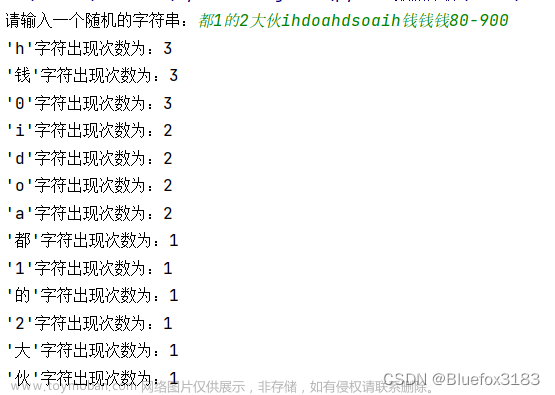介绍生成随机字符串的几种方法:文章来源地址https://www.toymoban.com/news/detail-605946.html
1. 使用random.choice()实现
import string
import random
number_of_strings = 5
length_of_string = 8
for x in range(number_of_strings):
print(''.join(random.choice(string.ascii_letters + string.digits) for _ in range(length_of_string)))
import string
import random
number_of_strings = 5
length_of_string = 8
for x in range(number_of_strings):
print(''.join(random.SystemRandom().choice(string.ascii_letters + string.digits) for _ in range(length_of_string)))
2. 使用uuid.uuid4()实现
import uuid
print(uuid.uuid4())
# 440a93fe-45d7-4ccc-a6ee-baf10ce7388a
3. 使用StringGenerator.render_list()实现
'''
StringGenerator().render_list() 是在 Python 中生成多个随机字符串的简便方法。StringGenerator() 将正则表达式作为输入,它定义了用于生成随机字符串的字符。在 renderlist(len, unique=) 方法中,len 指定包含随机字符串的输出列表的长度,如果我们想要唯一的输出字符串,可以将 unique 关键字参数设置为 True。
要使用此方法,首先需要安装 StringGenerator 模块
'''
from strgen import StringGenerator
StringGenerator("[\l\d]{10}").render_list(3,unique=True)
# ['m98xQHMlBI', 'V4O8hPMWfh', 'cBJk3XcGny']
文章来源:https://www.toymoban.com/news/detail-605946.html
到了这里,关于在 Python 中生成随机字符串的文章就介绍完了。如果您还想了解更多内容,请在右上角搜索TOY模板网以前的文章或继续浏览下面的相关文章,希望大家以后多多支持TOY模板网!







